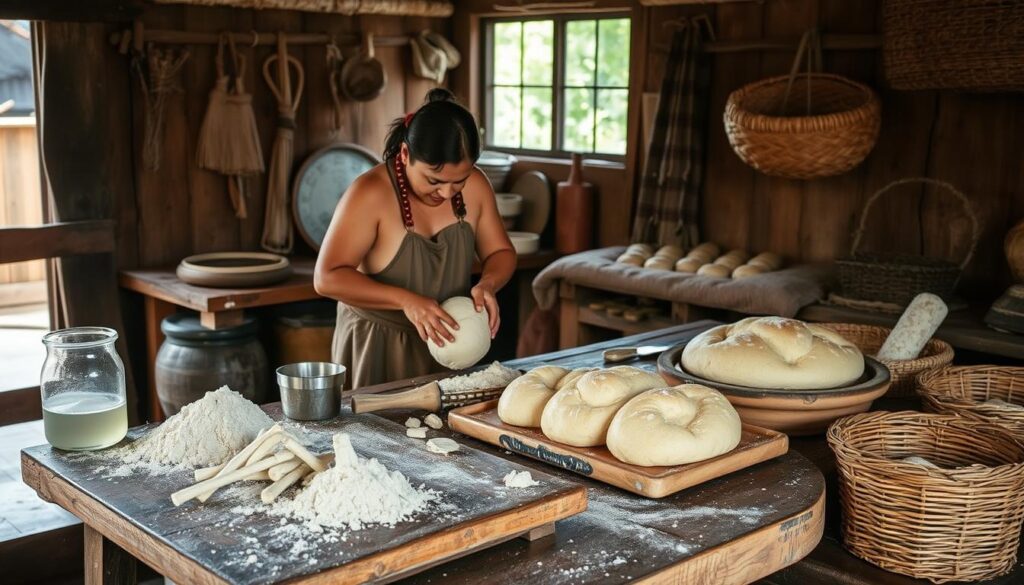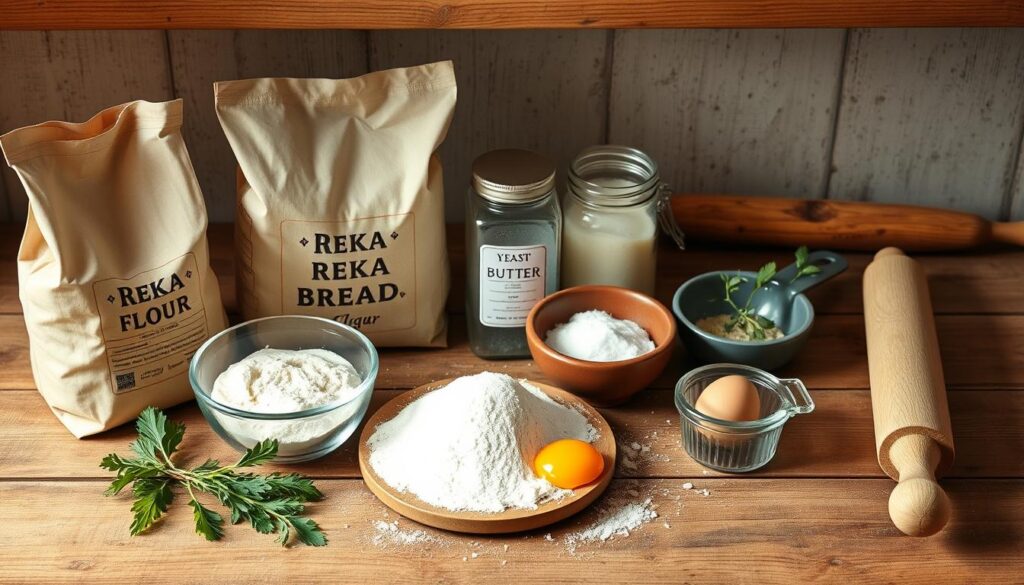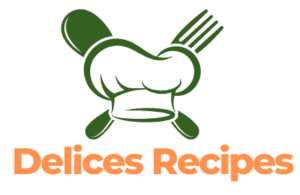Growing up in a multicultural kitchen, I fell in love with the Reka Bread Recipe. This traditional Maori fry bread is a delicious homemade treat that links generations through its simple yet amazing taste. The smell of freshly fried dough takes me back to family gatherings and meals that warm the heart.
This homemade bread recipe is more than cooking. It’s a journey into New Zealand’s Maori cuisine. Whether you’re an experienced cook or just starting, the Reka bread recipe lets you taste cultural heritage in your own kitchen. For more inspiration on global bread-making traditions, explore the Gipfeli Recipe to see how other cultures perfect their bread.
Table of contents
Introduction to Traditional Reka Bread Making
Discover the magic of the Reka Bread Recipe, a time-honored staple in Maori cuisine. Traditional bread making is more than just food—it’s a journey that connects generations through delicious, time-honored techniques. For those looking for healthier or alternative ways to enjoy bread, try our Cottage Cheese Banana Bread Recipe, which provides a unique, nutrient-packed twist on traditional methods.

The story of reka bread is deeply rooted in Maori cultural food traditions. This special bread is more than just food—it represents hospitality, community, and shared experiences.
History of Reka Bread in Maori Culture
The Reka Bread Recipe dates back to indigenous Maori traditions, bringing people together at Maraes and family gatherings for years. This bread was key in social gatherings.
- Served at significant events like weddings and funerals
- Symbol of welcome and community connection
- Prepared using simple, locally available ingredients
Cultural Significance and Traditional Uses
“Food is our connection to the past and our bridge to the future” – Maori Proverb
In Maori tradition, reka bread is more than just food. It symbolizes sharing, respect, and cultural identity. Each loaf tells a story of community resilience and culinary craftsmanship.
Modern Adaptations of the Recipe
While staying true to its roots, the Reka Bread Recipe now has variations like gluten-free options and baked versions for modern kitchens. This keeps the essence of this beloved bread alive while introducing new flavors.
| Traditional Method | Modern Adaptation |
|---|---|
| Yeast-based recipe | Gluten-free variations |
| Open-fire cooking | Modern kitchen appliances |
Essential Ingredients for Perfect Reka Bread
Making delicious Reka bread Recipe begins with picking the right ingredients. You can find flour in Reka at local stores or by foraging. These options are key for your bread-making journey.

- All-purpose flour (6 cups)
- Warm milk (1.5 cups)
- Warm water (1.5 cups)
- Active dry yeast (1 teaspoon)
- Sugar (1 teaspoon)
- Salt (1 teaspoon)
- Cooking oil for deep frying (4 cups)
Wondering how to make homemade wondra flour? Mix all-purpose flour with cornstarch. This mix is great when traditional flour is hard to find in Reka.
Pro tip: When sourcing grain in Reka, focus on local merchants who specialize in fresh, high-quality ingredients.
| Ingredient | Quantity | Sourcing Method |
|---|---|---|
| Flour | 6 cups | Local merchant or foraging |
| Milk | 1.5 cups | Local farm or market |
| Yeast | 1 teaspoon | Specialty food stores |
Every ingredient is vital for the perfect Reka bread. Fresh, quality ingredients are what make your bread stand out.
Kitchen Equipment and Tools Needed
Making delicious reka bread needs the right tools and deep frying gear. Success in cooking depends on the right cookware and knowing how to use each tool well.
To start, you need a set of kitchen tools for perfect reka bread. Choosing the right equipment makes cooking easier and more fun.
Required Cookware for Bread Making
- Large mixing bowl with high sides
- Heavy-bottomed deep frying pan
- Long metal tongs
- Sharp kitchen knife
- Measuring cups and spoons
- Slotted spoon for oil drainage
Optional Tools for Enhanced Results
Improve your reka bread making with these special tools:
- Digital cooking thermometer
- Dough scraper
- Pastry brush
- Kitchen scale for precise measurements
Safety Equipment for Deep Frying
Deep frying needs careful safety attention. Use these essential items to protect yourself:
| Safety Equipment | Purpose |
|---|---|
| Heat-resistant gloves | Prevent burns during cooking |
| Fire extinguisher | Emergency oil fire protection |
| Splatter screen | Minimize oil splatters |
| Long-handled utensils | Keep hands away from hot oil |
Pro tip: Always keep your deep frying equipment clean and well-maintained to ensure the best cooking results and extend the life of your kitchen tools.
Reka Bread Recipe: Step-by-Step Instructions
Are you ready to learn how to make traditional reka bread? This guide will show you how to make delicious Maori fry bread for about 30 people. Let’s start the journey of turning simple ingredients into a tasty treat!
First, get your ingredients ready for the reka bread recipe:
- 1.5 cups warm milk
- 1.5 cups warm water
- 1 teaspoon active dry yeast
- 1 teaspoon sugar
- 6 cups all-purpose flour
- 1 teaspoon salt
- 4 cups cooking oil for deep frying
Start by making your yeast mixture. Combine the warm milk, water, yeast, and sugar in a small bowl. Wait 5-10 minutes for it to get foamy. This means the yeast is working and ready.
In a big mixing bowl, mix the flour and salt. Make a well in the middle and add the yeast mixture. Mix until the dough is soft and sticky.
“The secret to great reka bread is patience and proper technique!” – Traditional Maori Cook
Knead the dough for 10 minutes until it’s smooth and elastic. Cover it with a towel and let it rise in a warm spot for 1.5 hours. It should grow to double its size, making it light and airy.
- Punch down the risen dough
- Roll out on a floured surface
- Cut into small rectangular pieces
- Heat oil in a large frying pan to 375°F
- Carefully fry each piece until golden brown
- Drain on paper towels to remove excess oil
Your homemade reka bread is now ready to serve warm. Enjoy it with your favorite toppings!
Mastering the Dough Preparation Process
Creating the perfect Reka bread starts with understanding the art of bread dough preparation. Your success depends on mastering a few key techniques. These techniques transform simple ingredients into a delectable treat.
The secret to exceptional bread lies in your kneading techniques and understanding how dough rises. Let’s break down the essential steps. This ensures your Reka bread turns out perfectly every time.
Essential Kneading Techniques
Kneading is key for developing gluten and creating the right texture. Follow these expert tips:
- Work the dough on a clean, lightly floured surface
- Use the heel of your hand to push and fold the dough
- Rotate the dough quarter turns for even development
- Knead for 5-7 minutes until smooth and elastic
Dough Rising Tips
Proper rising is critical for achieving the perfect Reka bread texture. Here’s a guide to successful dough proofing:
| Rising Stage | Temperature | Time | Expected Result |
|---|---|---|---|
| First Rise | 70-80°F | 1-1.5 hours | Doubled in size |
| Second Rise | 75-85°F | 30-45 minutes | Puffy and light |
Troubleshooting Common Dough Issues
Don’t let dough challenges discourage you. Common problems have simple solutions:
- If dough is too sticky, add flour gradually
- Check yeast freshness if dough doesn’t rise
- Maintain warm, draft-free environment
- Use room temperature ingredients
“Bread making is an art that improves with practice and patience.” – Artisan Baker
Remember, successful bread dough preparation requires attention to detail and a willingness to learn. Each batch of Reka bread brings you closer to perfection!
Deep Frying Techniques for Golden-Brown Results
Mastering deep frying bread needs precision and skill. Your golden-brown fry bread depends on the right frying techniques. These techniques turn simple dough into a crispy, tasty treat.
The secret to perfect deep frying bread is oil temperature and technique. Heat your oil to 350-375°F for consistent golden-brown results.
“Temperature is the key to achieving that perfect crisp exterior and soft interior.” – Professional Chef
- Use a deep, heavy-bottomed pan for even heat distribution
- Select high smoke-point oils like vegetable or canola
- Test oil readiness with a wooden chopstick or thermometer
- Maintain consistent oil temperature during frying
When deep frying bread, follow these critical steps:
- Carefully lower dough pieces into hot oil
- Allow sufficient space between bread pieces
- Use tongs to turn bread for even frying
- Remove when achieving a rich, golden-brown color
| Frying Parameter | Recommended Setting |
|---|---|
| Oil Temperature | 350-375°F |
| Batch Size | 3-4 pieces |
| Frying Time | 1-2 minutes per side |
Drain your freshly fried bread on paper towels to remove excess oil. This ensures a crisp texture and prevents soggy results. With practice, you’ll develop the perfect deep frying techniques for consistently golden-brown fry bread.
Sweet and Savory Topping Ideas
Reka bread is a perfect base for many toppings. You can choose from sweet or savory options. This bread makes any meal special.
Trying different toppings can make your reka bread experience better. Here are some tasty ideas to excite your taste buds.
Traditional Toppings That Never Disappoint
- Classic honey drizzle
- Homemade fruit preserves
- Golden syrup
- Creamy butter
- Add a layer of Homemade Apricot Jelly – Sweet, Tangy, and Easy to Make for a fruity twist.
Modern Flavor Combinations
For new ideas, try these modern toppings:
- Avocado spread with chili flakes
- Hummus with roasted vegetables
- Cream cheese and smoked salmon
- Caramelized onion jam
- Enjoy with tangy toppings like those found in Southern Cornbread with Beef Tallow for a savory treat.
Seasonal Serving Suggestions
Make your reka bread seasonal with these toppings:
- Summer: Fresh berries and whipped cream
- Fall: Pumpkin spread with cinnamon
- Winter: Spiced apple compote
- Spring: Lavender-infused honey
“The beauty of reka bread lies in its incredible versatility – there are no wrong choices, only delicious adventures!”
Storage Tips and Reheating Methods
Keeping your homemade Reka bread fresh is key. It’s best when it’s new, but the right storage can keep it tasty for days.
Here are some bread storage tips:
- Store in an airtight container at room temperature
- Keep away from direct sunlight and heat sources
- Consume within 1-2 days for optimal freshness
Freezing is great for longer storage. Wrap your Reka bread tightly in plastic wrap or aluminum foil before freezing. To reheat frozen fry bread, follow these steps:
- Thaw at room temperature for 1-2 hours
- Preheat oven to 350°F (175°C)
- Warm bread for 5-10 minutes
Pro tip: Avoid microwaving, as it can make the bread soggy and compromise its texture.
“The secret to great bread is not just in making it, but in preserving its delicious qualities.” – Traditional Baker’s Wisdom
| Storage Method | Duration | Best Practices |
|---|---|---|
| Room Temperature | 1-2 days | Airtight container |
| Refrigerator | 3-4 days | Wrapped in plastic |
| Freezer | Up to 3 months | Tightly sealed |
Reheating methods can greatly improve your leftover Reka bread. A quick pan-warming or oven method will bring back its crispy texture and warmth.
For ideas on how to reuse leftovers creatively, explore our Trader Joe’s Easy Meal Ideas for exciting and innovative suggestions.
Healthier Variations and Dietary Adaptations
Turning traditional reka bread into healthier options is exciting. It’s great for those with dietary needs or wellness goals. You don’t have to give up flavor or cultural taste.
Looking into gluten-free reka bread lets more people enjoy this tasty Maori treat. By swapping out ingredients, you can make a bread that fits different diets. It keeps its true taste and feel.
- Whole Wheat Flour Variation: Replace half the all-purpose flour with whole wheat for increased nutrition
- Gluten-Free Alternative: Use certified gluten-free flour blends
- Low-Fat Adaptation: Bake instead of deep-frying
- Vegan Version: Substitute dairy milk with plant-based alternatives
When making dietary bread changes, picking the right ingredients is key. Think about these nutritional tweaks:
| Dietary Requirement | Recommended Substitution |
|---|---|
| Gluten Sensitivity | Almond or coconut flour blend |
| Low-Carb | Almond flour or cauliflower base |
| Vegan | Flax egg, plant milk |
“Adapting traditional recipes allows everyone to experience cultural cuisine, regardless of dietary restrictions.” – Culinary Nutrition Expert
Pro tip: Always test your adaptations in small batches to perfect the texture and taste of your gluten-free reka bread.
Conclusion
Your journey with homemade reka bread is more than a cooking skill. It connects you to a rich Maori recipe, bringing culture and flavor to your kitchen. By mastering these bread making tips, you’ve learned to turn simple ingredients into a tasty treat.
Remember, making perfect reka bread takes practice. Each time you knead, shape, and try new flavors, you get better. Reka bread is versatile, perfect for family gatherings, special events, or a tasty snack any day.
Don’t be afraid to try new things. Whether you like sweet or savory, your homemade reka bread will delight your taste buds. Your kitchen is now a place for creativity, and reka bread is your delicious masterpiece.
FAQs
Where do you get flour in Reka?
In Reka, you can get flour at local markets, specialty food stores, or community co-ops. Many small-scale farmers also sell freshly milled flour directly.
Where to get grain in Reka?
Grain is commonly sourced from local farms, farmer’s markets, or specialty grain suppliers in Reka. Some areas even have grain mills where you can purchase whole grains and have them freshly ground.
How to make homemade Wondra flour?
To make homemade Wondra flour, mix 1 cup of all-purpose flour with 1 tablespoon of cornstarch. Sift the mixture multiple times to achieve a fine, consistent texture similar to Wondra flour.
What are the two seeds that we grind to get flour?
The two primary seeds we grind to get flour are wheat and rye. These grains are commonly used in bread-making and other baked goods.
Which flour is the most widely used of all flours?
All-purpose flour is the most widely used flour due to its versatility. It’s suitable for baking bread, cakes, cookies, and more, making it a staple in most kitchens.
